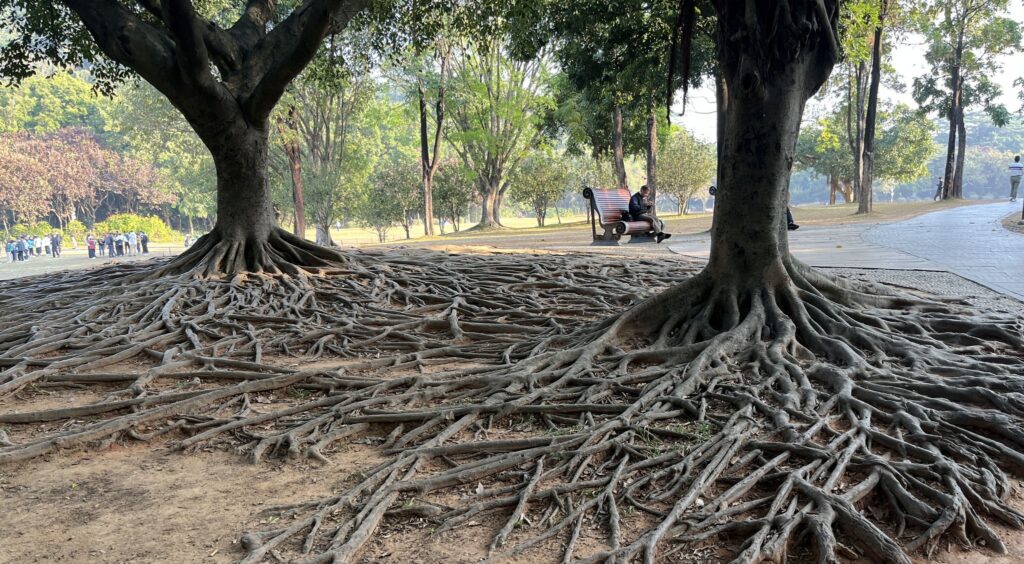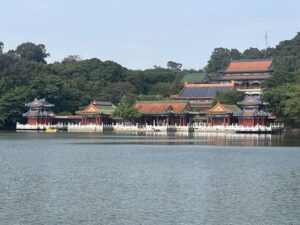Exciting Life Activity Zone | The Official Schoolgirl Milky Crisis Blog


It costs £4.50 to take the metro from Mongkok in Hong Kong to the end of the line at Lo Wu (Shell Lake). There, I exit the platform and go through passport control. There is a walkway across a viscous, khaki-coloured stream, no wider than the Thames at Kew. That is the Sham Chun (the Deep Drainage) river. When I reach the other side, Cantonese converts to Mandarin and I am back in China. Lo Wu is now Luo Hu. Shamchun is now Shenzhen.
The area has been repeatedly buffeted by history. In the 17th century, when the Manchus took extreme action to thwart the piratic raids of the Ming restorationist Koxinga, they forced two thirds of the population to move off their land. Twenty years later, the empty land was resettled by Hakka, the “guest people” of China, always scrambling to eke an existence from the worst bits of real estate. Far along the Shenzhen metro line at Nanlian, I drop in on a surviving Hakka “village” – a fortress the size of a city block, with musket slits, crenellations and watchtowers to repel marauders. Inside is a warren of tiny alleyways and residences, an entire community piled on top of each other, sacrificing privacy for protection.

The fort’s sole guardian is a bored teenage girl. The local Hakka really don’t seem to give much of a toss about preserving their heritage, and many of the exhibits in the fort are dusty and forlorn. Matters are not helped by the earnest decision to use the location as the site for an open-air exhibition of international poster design, which means that my attempt to get an authentic photograph of Qing dynasty architecture is thwarted by brightly-coloured adverts for the Berlinale film festival and an exhibition of Dutch pottery.
In 1898 the Sham Chun river became the arbitrary border between China and the “New Territories” ceded to Britain on a 99-year lease. The little river suddenly became a gulf between different worlds, splitting families and sundering contacts. It also, of course, didn’t. Those personal contacts across the water continued to endure, in smuggling and unofficial endeavours. In the war against Japan, the Shenzhen side became a bastion for the East River column, a guerrilla group devoted to exterminating the Japanese.

And then, in the 1980s, the border moved again. Shenzhen was rebranded a Special Economic Zone – a factory city to bring in foreign currency from Hong Kong. This meant that it was also walled off from the rest of China by the “Second Line” – a border fence to keep out would be economic migrants. All this was the brainchild of Deng Xiaoping, whose statue is on the top of Lotus Flower Hill, gazing proudly down at the towers of its Central Business District. It ballooned from fishing village to a city of 17.8 million people in 25 years. It’s a long climb to the top of the hill, but the Deng Xiaoping statue is one of the likely pictures I need to make today’s travel worthwhile. As I line up to get him in the viewfinder, a young Chinese woman bows three times before him, as if she is praying.

I am spending the night at Xiaomeisha, a supposed beach resort at the far eastern end of the metro line, as if someone tried to knock up Southend from scratch. The entire place is still a building site, and my hotel is entertainingly terrible. I can’t turn on the TV; I don’t know where the bathroom light switch is; the toilet and the shower are the same thing, and the “view” is of the 24-hour building site of a nearby tower block, with a constant cement mixer churning.

Luckily, my room has an Exciting Life Activity Zone pod – a bedside repository that threatens to pop open to reveal condoms, “Indian Spirit Oil”, a “Female Jumping Egg”, a dildo, a can of Coke, and, apparently, an entire Chinese woman in lingerie and cat ears. It conjures up fantastic visions of some of the fun nights to be had here to the sound of the cement mixer outside, but sadly, I only have myself for company.
Jonathan Clements is the author of A Brief History of China.







